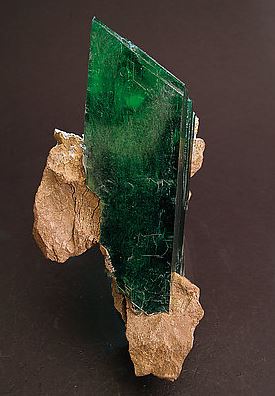In the realm of minerals and gemstones, Vivianite holds a unique allure. This rare and beautiful mineral, known for its deep blue to green hues, captivates collectors and jewelry enthusiasts alike.
This stunning mineral is more than just a pretty face. It’s a powerhouse of healing energy and spiritual growth. Known as the ‘Stone of Compassion’, it’s believed to aid emotional healing by encouraging forgiveness and releasing pent-up anger or fear.
Vivianite’s rarity and distinct properties make it a gemological marvel. Its delicate nature, however, requires careful handling, especially when crafted into vivianite jewelry such as rings.
This article delves into the fascinating world of Vivianite. From its unique formation to its use in jewelry, we explore why this mineral is so sought after. Join us as we uncover the allure of Vivianite.
The Enigmatic Discovery of Vivianite
Vivianite’s discovery is as intriguing as the mineral itself. Named after John Henry Vivian, a British mineralogist and politician, the mineral’s unique characteristics quickly caught the attention of the scientific community.
Often found in sedimentary and phosphate-rich environments, Vivianite is also discovered within fossil and bone deposits. This association with ancient life adds another layer of fascination to this already captivating mineral.
Vivianite’s Unique Properties and Formation
Vivianite is a rare iron phosphate mineral, forming in a monoclinic crystal system. Its striking deep blue to green color and pearly to submetallic luster contribute to its visual allure.
Vivianite crystals have been known to form on the bones of deceased organisms, giving rise to the intriguing association with ancient life and fossil deposits. The unique ability of vivianite to grow on corpses adds a fascinating and eerie dimension to its already captivating nature.
The mineral’s transparency can range from opaque to transparent, and it undergoes color change when exposed to light and air. This chameleon-like quality further enhances its appeal.
- Vivianite’s key properties include:
- Deep blue to green color
- Monoclinic crystal system
- Pearly to submetallic luster
- Color change when exposed to light and air
Vivianite in Jewelry: A Gemological Marvel
Despite its delicate nature, vivianite’s unique color and clarity make it a desirable gemstone. Professional cutting and polishing can enhance these qualities, creating stunning vivianite jewelry pieces.
The Delicate Nature of Vivianite Jewelry
With a Mohs hardness of 1.5-2, vivianite is a fragile choice for jewelry. It requires a protective setting and careful handling to prevent damage.
Vivianite rings and other jewelry pieces are often custom-made to showcase the mineral’s beauty while ensuring its preservation.
Caring for Your Vivianite Gem
Understanding vivianite’s care requirements is essential for its preservation. The mineral should be stored away from light and air to prevent color change.
Moreover, vivianite jewelry should be worn with care, avoiding any harsh physical contact or exposure to chemicals.
The Rarity and Value of Vivianite
Vivianite’s rarity often leads to high prices for quality specimens and jewelry pieces. Its scarcity and unique characteristics make it a significant jewelry investment.
The mineral’s color intensity can be an indicator of its quality and value. The deeper and richer the hue, the more desirable the vivianite.
Collectors and enthusiasts seek out vivianite for its unique and vibrant hues, adding to its market value.
Vivianite Specimens: Collectors’ Pride
Vivianite specimens are prized in mineral museums and private collections. Their deep, rich colors and crystal clarity make them a collector’s delight.
The mineral’s geological rarity adds to its mystique and desirability, making each vivianite specimen a coveted piece in any collection.
Conclusion: The Allure of Vivianite
Vivianite’s appeal lies in its deep, rich colors, crystal clarity, and geological rarity. These unique characteristics make it a fascinating subject for mineral collectors and gemstone enthusiasts alike.
Whether showcased in a museum, worn as a vivianite ring, or treasured in a private collection, this rare and beautiful mineral never fails to captivate.





